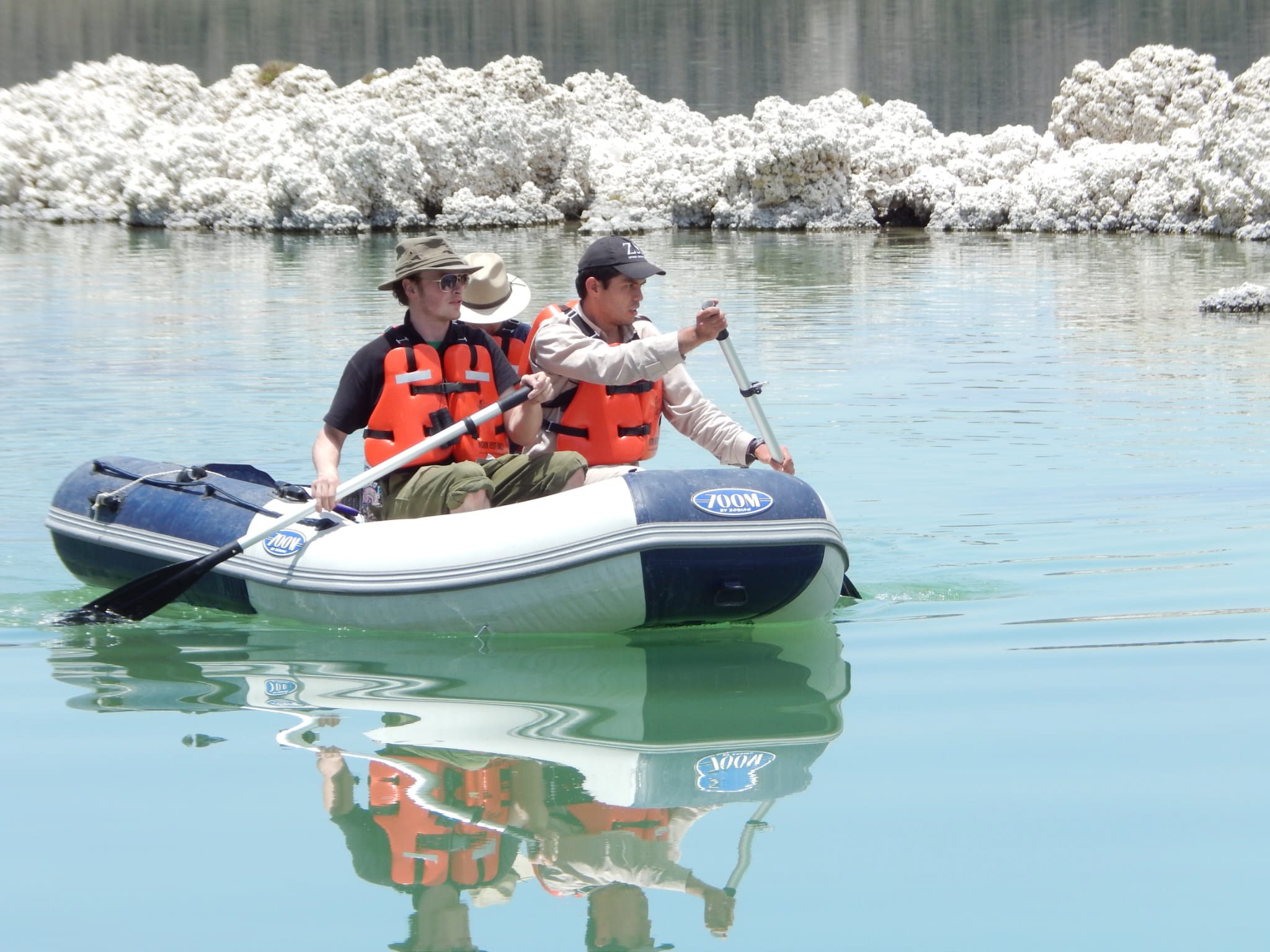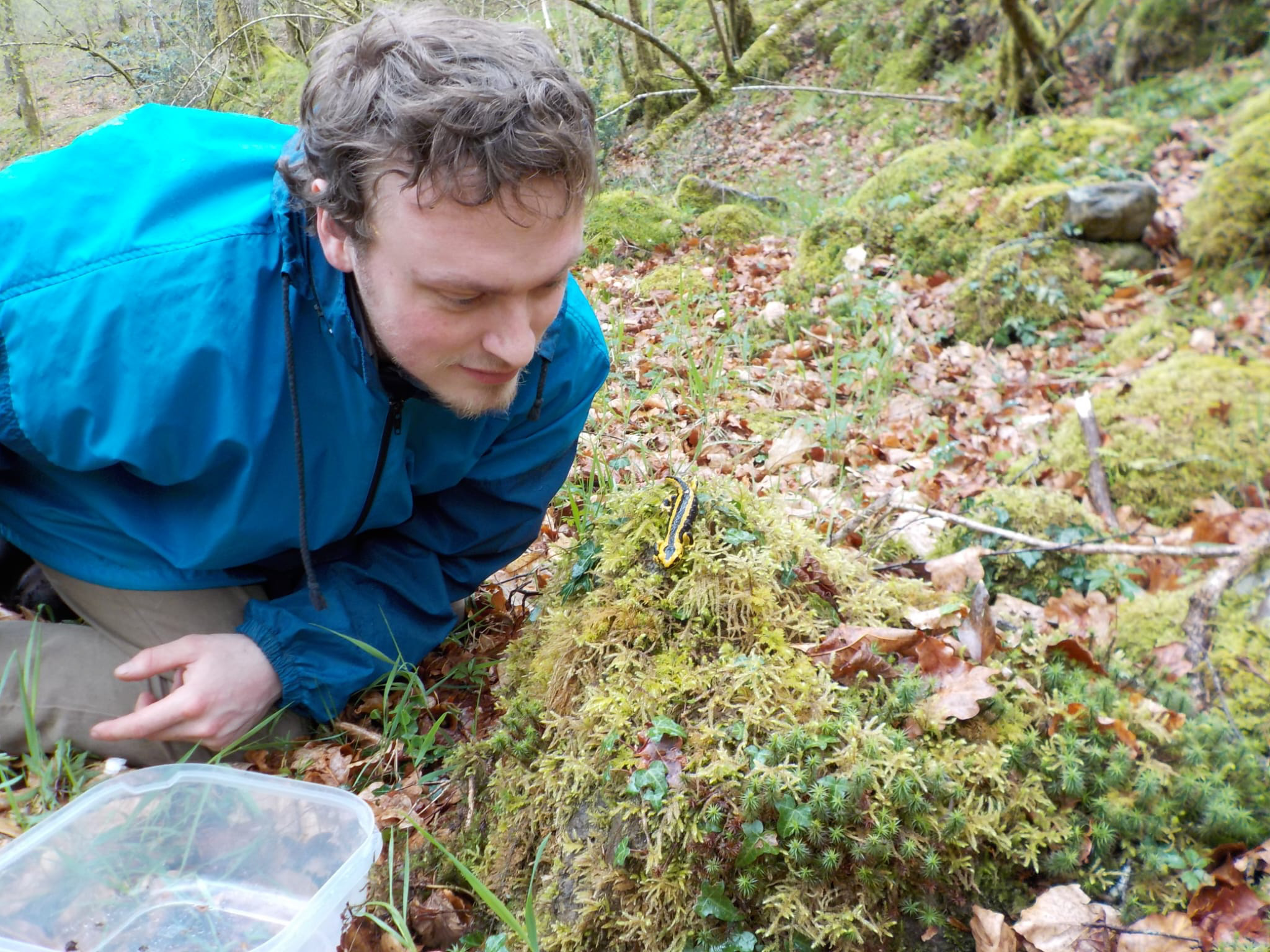Dr Chris Michaels
BA (Oxon) PhD FLS


Wildlife Population Health
Dr Chris Michaels
BA (Oxon) PhD FLS
Chris applies Bayesian and frequentist methods to conservation challenges, including identifying nesting habitats for threatened turtles, informing enclosure design and nutrition for mountain chicken frogs, evaluating public engagement in Indian chelonian conservation, and modelling the distribution and phenology of Mexican salamanders. Beyond statistics, he has supported restoration of pool frogs in the UK and crested toads in Mexico, developed ex situ conservation and research projects for amphibians, and conducted nutritional health work in birds and primates. Chris has delivered training in amphibian husbandry and quantitative methods for the Zoological Society of London, the British and Irish Association of Zoos and Aquariums, the European Association of Zoos and Aquariums, the Royal Veterinary College, and Amphibian Ark. He is also a Trustee of the Harrison Institute, a member of the IUCN SSC Amphibian Specialist Group, and a visiting researcher at the University of Plymouth.
Contact Chris on chrismichaels@wild-animal-health.com
Dr Chris Michaels
Conservation Biologist
Chris has delivered training in amphibian husbandry and quantitative methods for the Zoological Society of London, the British and Irish Association of Zoos and Aquariums, the European Association of Zoos and Aquariums, the Royal Veterinary College, and Amphibian Ark. He is also a Trustee of the Harrison Institute, a member of the IUCN SSC Amphibian Specialist Group, and a visiting researcher at the University of Plymouth.


Dr Chris Michaels
Selected Publications – Dr Chris Michaels
Michaels, C.J., Jakobsen, L. and Newham, Z. (2022) For the future: Behavioural biology for the evidence-based keeper; IN: Behavioural Biology of Zoo Animals. Taylor & Francis.
Michaels, C.J. et al. (2023). Genus Alytes. Biology and captive husbandry of midwife toads. Edition Chimaira.
Tapley, B., Johnson, K., Michaels, C.J., […], Kacoliris, F.B. (2024). Chapter 11: Conservation breeding. In – Amphibian conservation action plan: A status review and roadmap for global amphibian conservation IUCN SSC Amphibian Specialist Group
Tapley, B., Michaels, C.J., Chaney, N., Dunker, F., Freiermuth, B., Willis, J., Blackburn, D., Ævarsson, U., Fieschi-Méric, L. and Doherty‐Bone, T., 2023. Amphibian Taxon Advisory Group Best Practice Guidelines for the Lake Oku clawed frog Xenopus longipes Version 2.
Bland, A.W., Michaels, C. J., Garcia, G., Tapley, B., Domínguez, O. D., Rodríguez, R. P., Vázquez, L. H. E., McLaren, E., Lopez, J. and Bamford, P. (2021). EAZA Best Practice Guidelines for the Lake Pátzcuaro salamander (Ambystoma dumerilii) – first edition. European Association of Zoos and Aquariums, Amsterdam, The Netherlands.
Bogaerts, S., Lötters, S., Spitzen-van der Sluijs, A., Preiβler, K., Caspers, B., Oswald, P., Michaels, C.J., ter Meulen, T., Reinhardt, T., Martel, A. and Pasmans, F. (2021). EAZA Best Practice Guidelines for fire salamanders (Salamandra salamandra) – First edition. European Association of Zoos and Aquariums, Amsterdam, The Netherlands.
Tapley, B., Michaels, C.J. Macale, D., Vignoli, L., Harding, L., Bryant, Z., Gill, I., and Funnel, S. (2015). EAZA Amphibian Taxon Advisory Group Best Practice Guidelines for the Sardinian brook salamander Euproctus platycephalus. Version 1. European Association of Zoos and Aquariums, Amsterdam, The Netherlands.
Hodges, R.J., Seabrook, C. and Michaels, C.J., 2024. Patterns of spatial and temporal association between Zootoca vivipara, Anguis fragilis, Vipera berus and Natrix helvetica at artificial refuges. Herpetological Journal, 34(3), pp.145-151.
Isa, H.R., Tapley, B. and Michaels, C.J., 2024. How many Data Deficient amphibians are threatened? IUCN Red List assessments for amphibian species previously classed as Data Deficient. The Herpetological Bulletin, (169).
Ahmed, K., Tapley, B. and Michaels, C.J. (2024). Global and regional patterns in distribution and threat status of zoo collections of turtles and tortoises. Herpetological Journal, 34(1), 1-10.
Mannings, E., Servini, F., Tapley, B. and Michaels, C.J. (2023). Activity budgets, responses to disturbance and novel behaviours in captive mountain chicken frogs Leptodactylus fallax. Herpetological Journal, 33(2), 43-54.
Kane, D. and Michaels, C.J. (2022). Body size comparisons between wild and captive puff adders Bitis arietans. Herpetological Journal, 32(4), 176-182.
Dias J.E., Ellis C., Smith T.E., Hosie C.A., Tapley B. and Michaels C.J. (2022). Baseline behavioral data and behavioral correlates of disturbance for the Lake Oku clawed frog (Xenopus longipes). Journal of Zoological and Botanical Gardens 3,184-197. https://doi.org/10.3390/jzbg3020016
Bah-Nelson, I., Newton-Youens, J., Ferguson, A., and Michaels, C.J. (2021). Calcium accumulation and loss and vitamin D3 content of feeder black field crickets (Gryllus bimaculatus) fed on a high calcium diet with and without UVB irradiation” Journal of Zoological and Botanical Gardens 2: 382-387. https://doi.org/10.3390/jzbg2030027
Freeland, L., Ellis, C. and Michaels, C.J., (2020). Documenting Aggression, Dominance and the Impacts of Visitor Interaction on Galápagos Tortoises (Chelonoidis nigra) in a Zoo Setting. Animals, 10: 699-711.
Whatley, C., Tapley, B., Chang, R., Newton-Youens, J., Mckendry D. and Michaels, C.J. (2020) Impacts of UVB provision on serum vitamin D3, pigmentation, growth rates and total body mineral content in Mallorcan midwife toad larvae (Alytes muletensis). Journal of Zoo and Aquarium Research 8: 37-44.
Jaffe, J., Ferguson, F. and Michaels, C.J. (2019). The utility of dried blood spots for the assessment of avian vitamin D3 status compared with plasma analysis. Journal of Zoo and Aquarium Research 7: 138-143.
Pareek, P.S., Khalid, M.A., Michaels, C.J., Singh, S. (In press). Nesting habitat Characterization of Red-crowned Roofed Turtle (Batagur kachuga) along lower Chambal, India. Herpetological Journal.
Curteis, T., Wigle, A., Michaels, C.J. and Nikolakopoulou, A., 2025. Ranking of treatments in network meta-analysis: incorporating minimally important differences. BMC medical research methodology, 25(1), p.67.
Michaels, C.J. and Diaz, J.A.H., 2025. Initial field data for the Critically Endangered Alchichica salamander Ambystoma taylori from Lago Alchichica, Mexico. The Herpetological Bulletin, (171).
Michaels, C.J., Ferguson, A, Newton-Youens, J. Harland, R. & Hickles, R. (2022). Effects of sex and whole life cycle uvb irradiation on performance and mineral and vitamin D3 contents in feeder crickets (Gryllus bimaculatus). Journal of Zoological and Botanical Gardens 3: 488-498.
Michaels, C.J., Carter, K.C., Servini, F. & Tapley, B. (2022). Sexually dimorphic growth and maturity in captive mountain chicken frogs Leptodactylus fallax. Herpetological Bulletin, 161: 12-15.
Newton-Youens, J., Michaels, C.J. & Preziosi, R. (2022). Keeping the golden mantella golden: The effect of dietary carotenoid supplementation and UV provision on the colouration and growth of Mantella aurantiaca. Journal of Zoo and Aquarium Research 498: 411- 419.
Michaels, C.J. (2022). Effects of aquatic and terrestrial habitats on the skin microbiome and growth rate of juvenile alpine newts (Ichthyosaura alpestris). Herpetological Journal 32: 51-58.
Bates, K., Sommer, U., Hopkins, K., Shelton, J., Wierzbicki, C., Sergeant, C., Tapley, B., Michaels, C.J., Schmeller, D.K., Loyau, A., Bosch, J., Viant, M., Harrison, X., Garner, T. & Fisher, M. (2022). Microbiome function predicts amphibian chytridiomycosis disease dynamics. Microbiome 10, 44. https://doi.org/10.1186/s40168-021-01215-6
Michaels, C.J., Servini, C., Ferguson, A., Guthrie, A., Jayson, S., Newton-Youens, J., Strike, T. and Tapley, B. (2021). The effects of two calcium supplementation regimens on growth and health traits of juvenile mountain chicken frogs (Leptodactylus fallax). The Herpetological Journal 31: 18-26.
Tapley, B., Michaels, C.J., Gower, D.J., and Wilkinson, M. (2019). The use of visible implant elastomer to permanently identify caecilians (Amphibia: Gymnophiona). The Herpetological Bulletin 150: 18-22.
Jayson, S., Ferguson, A., Goetz, M., Routh, A., Tapley, B., Harding, L., Michaels, C.J. and Dawson, J. (2018). Comparison of the nutritional content of the captive and wild diets of the critically endangered mountain chicken frog (Leptodactylus fallax) to improve its captive husbandry. Zoo Biology 37: 332-346.
Jayson, S., Harding, L., Michaels, C.J., Tapley, B., Hedley, J., Goetz, M., Barbon, A., Garcia, G., Lopez, J. and Flach, E. (2018). Development of a body condition score for the mountain chicken frog (Leptodactylus fallax). Zoo Biology 37: 196-205.
Michaels, C.J., Rendle, M., Gibault, C., Lopez, J., Garcia, G., Perkins, M., Cameron, S. and Tapley, B. (2018) Batrachochytrium dendrobatidis infection and treatment in the salamanders Ambystoma andersoni, A. dumerilii and A. mexicanum. Herpetological Journal 28: 87-92.
Jayson S, Harding L, Michaels, C.J., Tapley, B., Hedley, J., Goetz, M., Barbon, A., Garcia, G., Lopez, J. and Flach, E. (2018). Development of a body condition score for the mountain chicken frog (Leptodactylus fallax). Zoo Biology 2018: 1–10.
Tapley, B., Michaels, C.J., Gumbs, R., Böhm, M., Luedtke, J., Pearce-Kelly, P. and Rowley, J.J. (2018). The disparity between species description and conservation assessment: A case study in taxa with high rates of species discovery. Biological Conservation 220: 209-214.
Huggins, L.G., Michaels, C.J., Cruickshank, S.M., Preziosi, R.F. and Else, K.J. (2017). A novel copro-diagnostic molecular method for qualitative detection and identification of parasitic nematodes in amphibians and reptiles. PloS one, 12: e0185151.
Tapley, B., Michaels, C.J., Johnson, K. and Field, D. (2017). A global problem requires a global multifaceted solution. Animal Conservation 20: 122-123.
Michaels, CJ., Hernandez Diaz, JA., Muciño, M., Muñoz-García, C., Osorio-Sarabia, D., Acebes, L., Couchman, O., Owen, N., and Waterman, C. (2016). Fatal parasitosis caused by Hedruris siredonis (Nematoda) Baird, 1858 in the Alchichica salamander Ambystoma taylori Brandon, Maruska and Rumph 1982. Herpetology Notes 9: 43-46.
